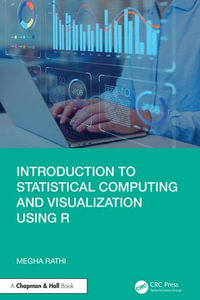
eTEXT
Discriminative Pattern Discovery on Biological Networks
By: Fabio Fassetti, Simona E. Rombo, Cristina Serrao
eText | 1 September 2017
At a Glance
eText
$89.99
or
Instant online reading in your Booktopia eTextbook Library *
Read online on
Desktop
Tablet
Mobile
Not downloadable to your eReader or an app
Why choose an eTextbook?
Instant Access *
Purchase and read your book immediately
Read Aloud
Listen and follow along as Bookshelf reads to you
Study Tools
Built-in study tools like highlights and more
* eTextbooks are not downloadable to your eReader or an app and can be accessed via web browsers only. You must be connected to the internet and have no technical issues with your device or browser that could prevent the eTextbook from operating.
ISBN: 9783319634777
ISBN-10: 3319634771
Series: SpringerBriefs in Computer Science
Published: 1st September 2017
Format: PDF
Language: English
Publisher: Springer Nature
You Can Find This eBook In
This product is categorised by
- Non-FictionComputing & I.T.Computer ScienceArtificial IntelligenceComputer Vision
- Non-FictionComputing & I.T.DatabasesData Mining
- Non-FictionMedicinePre-Clinical Medicine & Basic SciencesMedical Genetics
- Non-FictionComputing & I.T.Computer ScienceArtificial IntelligencePattern Recognition
- Non-FictionScienceBiology, Life SciencesMolecular Biology
- Non-FictionScienceScience in General
- Non-FictionMathematicsProbability & Statistics
- Non-FictionScienceBiology, Life SciencesLife Sciences in GeneralGenetics excluding Medical
- Non-FictionComputing & I.T.Computer ScienceArtificial IntelligenceExpert Systems & Knowledge-Based Systems
- Non-FictionScienceBiology, Life Sciences























